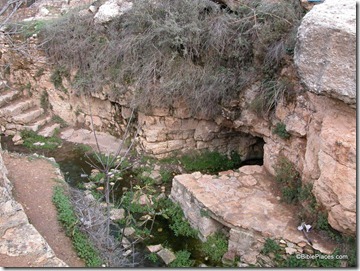A Byzantine-period bathhouse has been discovered near Moshav Tarum north of Beth Shemesh.
A cuneiform inscription discovered in the Tas-Silg sanctuary on Malta is now the westernmost such inscription known.
Haaretz reports on an archaeologist who believes he is close to finding the true tombs of the Maccabees.
Preston Sprinkle asks if Jesus was born at an inn and if he was a carpenter.
Leon Mauldin shares some photos of the traditional site of Jesus’ birth in Bethlehem and of a stone manger possibly similar to one used for the newborn.
Ferrell Jenkins links to some previous posts about the birth of Jesus and Christmas.
Aren Maeir’s idea of a Hanukkah/Christmas gift is to share one letter from an inscription found at Gath.
As far as we know, he was never known as “Herod the Great” during his lifetime. Ferrell Jenkins explains why a better appellation is “Herod the Small.”
The Bible and Interpretation is sharing one of my favorite photos of Jerusalem today (click on the thumbnail for large version).
Bryant Wood will be giving a series of lectures at Detroit Baptist Theological Seminary on March 14, 2012. His topic will be “Archaeology and the Conquest: New Evidence on an Old Problem.”
The Daily Mail publishes an illustrated account of one visitor’s five-day visit to Jordan and its main attraction, Petra.
The Jerusalem Post suggests 10 things to do over Christmas in the Holy Land. For the first time ever, live-size nativity scenes will be set up in Bethlehem and Jerusalem. Item 9 explains how you can celebrate Christmas three times this season.
HT: Charles Savelle, Jack Sasson, Joseph Lauer

